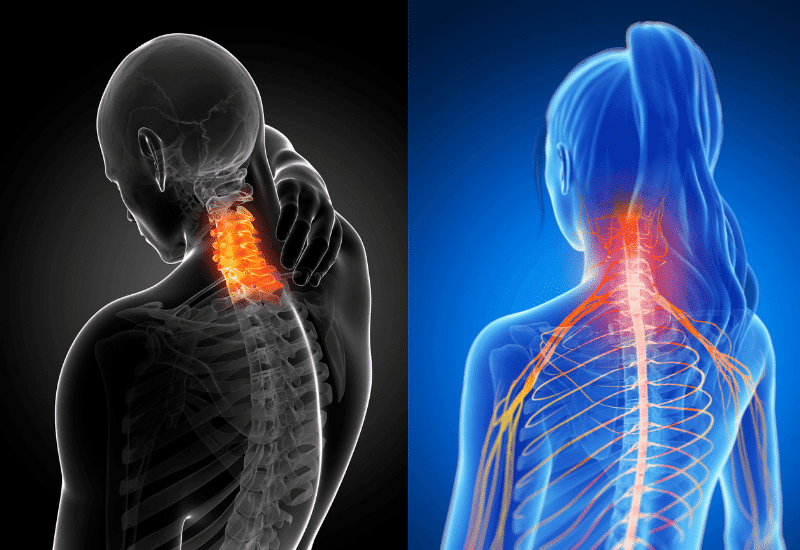- (213) 369-4583
- Monday - Friday
- 9 am - 5 pm
The Most Common Types Of Neck Surgery Explained

Nov 08, 2022
Accidents or physical activities like playing sports often cause neck injuries. It can also be due to wear and tear of the vertebrae due to aging. Injuries to the cervical vertebrae lead to many challenges in everyday life, and it's important to treat them quickly to avoid sustaining further damage. This article will briefly explain the procedures of the most common types of neck surgery and discuss their requirements.
If you are experiencing any symptoms of neck pain that hint at sustaining a serious neck injury, you can talk to our spine surgeon in Los Angeles by calling (213) 369-4583.
Different Reasons for Undergoing a Neck Surgery
There are many reasons why someone might need neck surgery. The most common reasons include;
- Degenerative disc diseases of the spine such as Osteoarthritis
- Trauma from an accident or injury
- Tumors
- Congenital defects
No matter the reason, neck surgery is a serious procedure that should only be undertaken after careful consideration and consultation with a qualified neurosurgeon. If you are experiencing neck pain or other symptoms that may warrant surgery, be sure to get a comprehensive evaluation to ensure that all nonsurgical treatment options have been exhausted first.
You might also want to read: How spinal cord injuries are diagnosed and treated?
Types of Neck Surgery

Choosing among different types of neck surgery entails considering the type of injury one has sustained as well as the location of the injury. The type of neck surgery can only be finalized after the full-fledged diagnosis has been conducted. Here are a few most used types of neck surgery;
1. Cervical Discectomy and Fusion (CDF)
Surgeons remove the damaged part of the disc from the cervical spine, relieving pressure from the spinal cord or nerve root and alleviating pain. They then surgically fuse the vertebrae above and below the disc to provide stability and strength to the spine. This procedure is through an incision in the front of the neck, hence earning it the name "anterior."
Different surgical options are used to treat patients under ACDF. A good doctor explains all the options to the patients along with their potential risks and complications. For example, surgeons will determine how many vertebrae levels to treat and which types of implants to use for fusion.
2. Multilevel Cervical Laminectomy and Fusion
The cervical laminectomy procedure aims to alleviate pressure on the spinal cord or spinal nerve roots, typically caused by herniated disks, thickened ligaments, or bone spurs. Beginning with an incision in the back of the neck, the surgeon carefully removes a portion of the vertebral lamina, covering the spinal canal. This action relieves pressure on the spinal cord or nerve roots. The surgeon inserts a fusion cage (graft cage) between the vertebrae and fills it with bone graft material to promote fusion over time. In some instances, the surgeon may also utilize metal rods and screws to stabilize the spine during the healing process. The goal of cervical laminectomy is to relieve pressure on the spinal nerve roots and to stabilize the spine.
Surgeons typically perform this procedure as an outpatient procedure, allowing patients to return home on the same day. However, some patients may need to stay for a couple of days based on their medical conditions and required care. Recovery times vary depending on each patient, but you can expect to feel some soreness and stiffness in your neck for several days after your surgery.
3. Cervical Disc Replacement Surgery
Surgeons use cervical disc replacement surgery to treat damaged or herniated discs in the neck, which consists of vertebrae separated by discs. These discs act as shock absorbers and allow the spine to move freely. Over time, these discs can become damaged or herniated, causing pain and inflammation. Cervical disc replacement surgery involves removing the damaged disc and replacing it with an artificial disc.
Minimally Invasive Neck Surgery

Surgeons have been performing spine surgeries conventionally for a long time which involved making large incisions in the body. Now, with technological advancement, it has become possible to perform minimally invasive spine surgeries using video cameras and other endoscopic instruments. Surgeons can also perform neck surgery using minimally invasive techniques. This approach has several benefits including a short recovery period, less loss of blood, and less pain during the operation.
Neck Surgery in Los Angeles
Consult our Los Angeles neurosurgeon if you've had long-standing neck pain and are considering surgery. Here at Southern California Brain & Spine Surgery, Dr. Moksha Ranasinghe provides top-quality treatment to patients suffering from spine disorders. You can schedule an appointment by calling us at 213-369-4583 or filling out the contact form.




